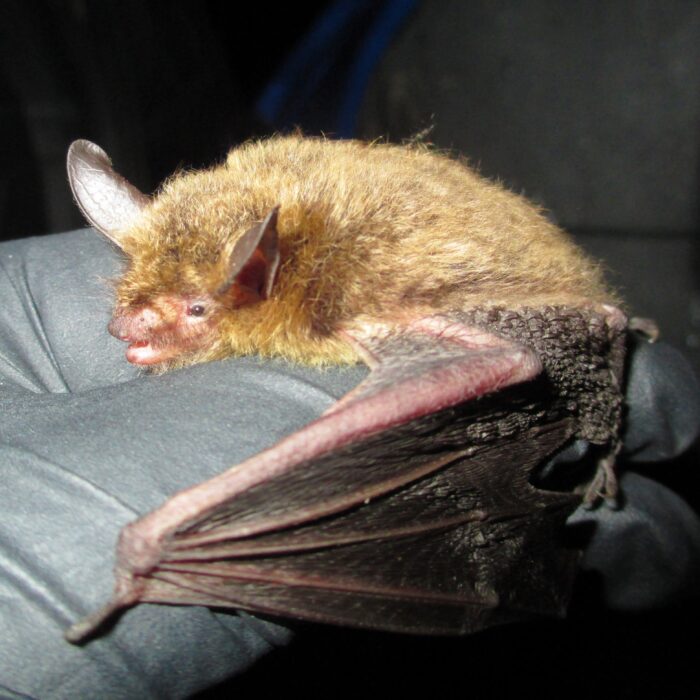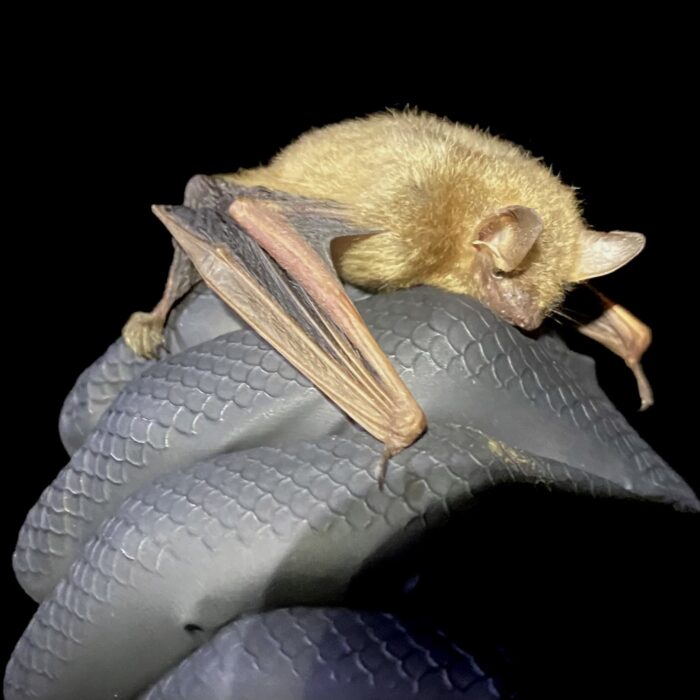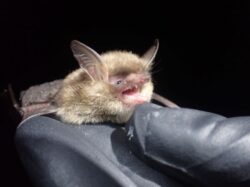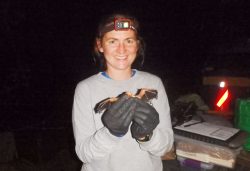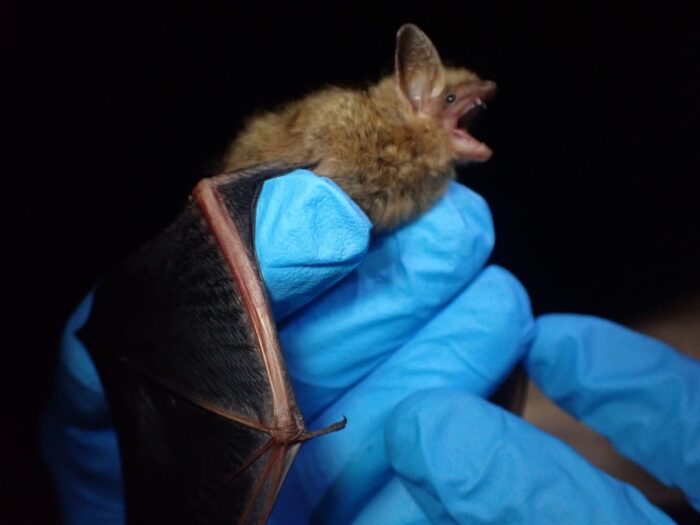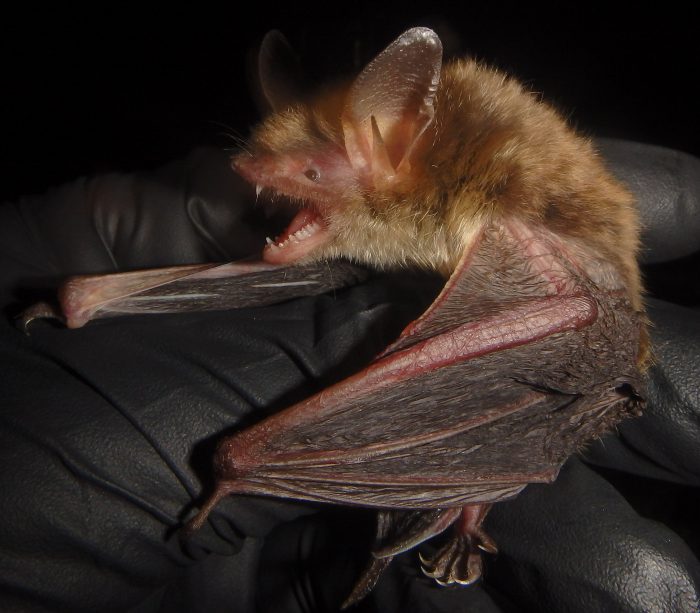Luke Fultz Earns Federal Recovery Permit for Endangered Bats
At EnviroScience, we take pride in the expertise and dedication of our team of bat biologists. We’re excited to announce that Luke Fultz, B.S., Ecologist & Bat Project Manager, has earned a Federal Recovery Permit from the U.S. Fish and Wildlife Service (USFWS) for three federally protected bat species:
- Indiana bat (Myotis sodalis)
- Northern long-eared bat (Myotis septentrionalis)
- Gray bat (Myotis grisescens)
This significant achievement highlights Luke’s expertise in endangered bat conservation and enhances EnviroScience’s ability to deliver industry-leading endangered bat survey services.
Why Federal Recovery Permits Matter
A Federal Recovery Permit is required to handle and survey federally listed bat species. These permits are granted to qualified biologists who have demonstrated proficiency in bat identification, safe handling techniques, and habitat assessments. By obtaining this permit, Luke joins a select group of bat experts authorized to conduct studies that support conservation efforts and regulatory compliance.
About Luke Fultz: A Leader in Bat Conservation
 Luke brings extensive experience in Threatened and Endangered (T&E) species surveys, habitat assessments, and environmental permitting. Since joining EnviroScience in 2024, he has played a key role in managing bat-related projects, ensuring regulatory compliance for clients across industries, including transportation, energy, private development, and conservation initiatives.
Luke brings extensive experience in Threatened and Endangered (T&E) species surveys, habitat assessments, and environmental permitting. Since joining EnviroScience in 2024, he has played a key role in managing bat-related projects, ensuring regulatory compliance for clients across industries, including transportation, energy, private development, and conservation initiatives.
Luke earned a B.S. in Wildlife Ecology & Conservation from Juniata College, where he specialized in Environmental Science, Ecology, and Wildlife Biology. With years of experience conducting biological monitoring, transportation planning, and natural resource assessments, he has developed a strong foundation in conservation strategies and regulatory compliance.
Passionate about bat conservation, Luke collaborates with EnviroScience’s team of renowned bat biologists to deliver cutting-edge solutions that protect critical habitats while supporting client needs.
EnviroScience’s Endangered Bat Surveys and Services
With Luke’s permit and our team of experienced bat biologists, EnviroScience is equipped to conduct a full suite of bat surveys and consulting services to help clients navigate regulatory requirements and protect critical bat habitats. Our services include:
- Mist-Net and Acoustic Surveys – Identifying bat species presence to ensure compliance with the Endangered Species Act (ESA) and state regulations.
- Habitat Assessments – Evaluating roosting, foraging, and hibernation sites to inform conservation planning and land development.
- Radio Telemetry Tracking – Monitoring bat movements to assess habitat use and migration patterns.
- Hibernacula Surveys – Conducting winter cave and mine assessments to evaluate bat populations and hibernation conditions.
- Bat Exclusion and Mitigation – Implementing solutions that balance environmental conservation with project development.
These services are essential for industries such as transportation, energy, forestry, and development, ensuring compliance with the Endangered Species Act (ESA) while supporting responsible land use.
Partner with EnviroScience for Expert Bat Surveys
As regulations surrounding bat conservation continue to evolve, having an experienced team on your side is crucial. EnviroScience’s bat experts help clients meet environmental compliance requirements while promoting the protection of these vital species.
Learn more about our endangered bat surveys or contact us to discuss how we can assist with your project.
Few environmental firms in the country retain EnviroScience’s degree of scientific know-how, talent, and capability under one roof. The diverse backgrounds of our biologists, environmental engineers, scientists, and divers enable us to provide comprehensive in-house services and an integrated approach to solving environmental challenges—saving clients time, reducing costs, and ensuring high-quality results.
Our client guarantee is to provide “Excellence in Any Environment,” meaning no matter what we do, we will deliver on our Core Values of respect, client advocacy, quality work, accountability, teamwork, and safety. EnviroScience was created with the concept that we could solve complex problems by empowering great people. This concept still holds true today as our scientists explore the latest environmental legislation and regulations and incorporate the most up-to-date technology to gather and report data.
EnviroScience expertise includes but is not limited to aquatic surveys (including macroinvertebrate surveys and biological assessments); ecological restoration; ecological services (including impact assessments, invasive species control, and water quality monitoring); emergency response; engineering and compliance services; endangered mussel surveys; laboratory and analysis; stormwater management; sustainability services; threatened and endangered species; and wetlands and streams (including delineation and mitigation). Further, EnviroScience is one of the few biological firms in the country that is a general member of the Association of Diving Contractors International (ADCI) and offers full-service commercial diving services.
